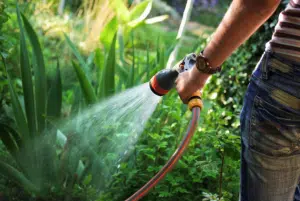The Hidden Dangers of Bleach: Keeping Your Septic Tank Healthy
When it comes to maintaining your home, many of us have been taught that a little bleach goes a long way in keeping things clean. But when it comes to your septic tank, that familiar “bleachy stuff” can actually do more harm than good. Let’s dive into why avoiding bleach and other harsh chemicals is essential for your septic system’s health, and what you can do to keep everything running smoothly.
The Role of Bacteria in Your Septic System
First, let’s understand what happens inside your septic tank. Your septic system relies on a balance of good bacteria to break down waste, including what we might politely refer to as “poos and wees.” These bacteria are vital for decomposing solids and filtering out harmful pathogens. However, when you introduce bleach or bleach-based products, you disrupt this delicate ecosystem.
What Happens When You Use Bleach?
Bleach, or sodium hypochlorite, is a powerful disinfectant that kills a wide range of bacteria and viruses. While this can be beneficial for cleaning surfaces in your home, the same cannot be said for your septic tank. When you pour bleach down the sink or wash it away in the laundry, you’re effectively wiping out the good bacteria that play an essential role in breaking down waste.
This disruption can lead to a host of problems:
Foul Odors: With fewer bacteria to break down waste, you may notice unpleasant smells emanating from your drains or the area around your septic tank.
Clogs and Blockages: A lack of bacteria means that solids are not being adequately decomposed, leading to clogs in pipes and eventually in the tank itself.
Costly Repairs: When your septic system malfunctions due to chemical disruption, you may face expensive repairs or even the need for a total system evacuation (also known as a pumpout). This can range anywhere from hundreds to thousands of dollars.
Say No to Bleach: Embrace Greener Alternatives
So, what can you do instead? The answer lies in opting for septic-safe cleaning products. Here’s how to make that transition easier:
Read Labels: Always check for “septic safe” labels on cleaning products. These products are formulated to clean effectively without harming the beneficial bacteria in your septic system.
Choose Natural Cleaners: Look for alternatives made from natural ingredients. For example, vinegar, baking soda, and lemon juice can effectively clean surfaces without disrupting your septic tank.
- Vinegar: This can be used to clean glass and surfaces and is a natural deodorizer.
- Baking Soda: A gentle abrasive, baking soda can help with scrubbing without the harsh chemicals.
- Lemon Juice: Not only does it smell great, but its acidity can help cut through grease and grime.
Use ATU-Safe Products: If you’re using an Aerated Treatment Unit (ATU), make sure to shop for specific products designed to be safe for these systems. Many brands offer eco-friendly cleaners that won’t harm your septic tank.
Keep Your System Healthy: Do’s and Don’ts
Here are some simple do’s and don’ts for maintaining a healthy septic system:
Do:
- Use biodegradable soaps and detergents.
- Maintain a regular pumping schedule, usually every 3-5 years, depending on usage.
- Keep an eye on what goes down the drain—avoid flushing non-biodegradable items like wipes and feminine products.
Don’t:
- Avoid using bleach, Napisan, or other harsh chemical cleaners.
- Never flush anything other than human waste and toilet paper.
- Don’t overload your washing machine or dishwasher, as excessive water can overwhelm the system.
The Benefits of Going Green
By saying no to bleach and opting for septic-safe products, you’re not only protecting your septic system but also enjoying several benefits:
Cost Savings: With fewer callouts for repairs and maintenance, you’ll save money in the long run. By preventing clogs and malfunctions, you reduce the likelihood of costly interventions.
Environmental Responsibility: Choosing eco-friendly products contributes to a healthier environment. You’re not just taking care of your home; you’re also playing a part in protecting the ecosystem.
Improved Home Comfort: A well-maintained septic system means fewer odors and disruptions, allowing you to enjoy a more comfortable living space.
Final Thoughts
Maintaining a healthy septic tank is easier than you might think. By avoiding bleach and opting for septic-safe cleaning products, you’re protecting the good bacteria that keep your system functioning efficiently. This small change can lead to significant benefits, including cost savings, environmental responsibility, and a more pleasant home.
Next time you reach for that familiar bottle of bleach, remember the potential consequences for your septic system. Choose green alternatives and follow our Absolute Do’s and Don’ts for a Healthy ATU. Your septic tank—and your wallet—will thank you!
Related Posts
- Why is Wastewater Treatment Important?
- BWT Plumbing – South West Outer Region
- How Does a Domestic Sewage Treatment Plant Work?
- Paul Plumber & Co – Monaro Region
- The Various Uses of Treated Wastewater
- Why Is Wastewater Aerated?
- What are septic pump wells and how do they work?
- What are the New Technologies for Wastewater Treatment




